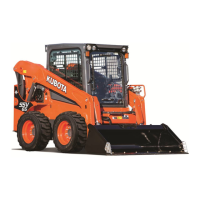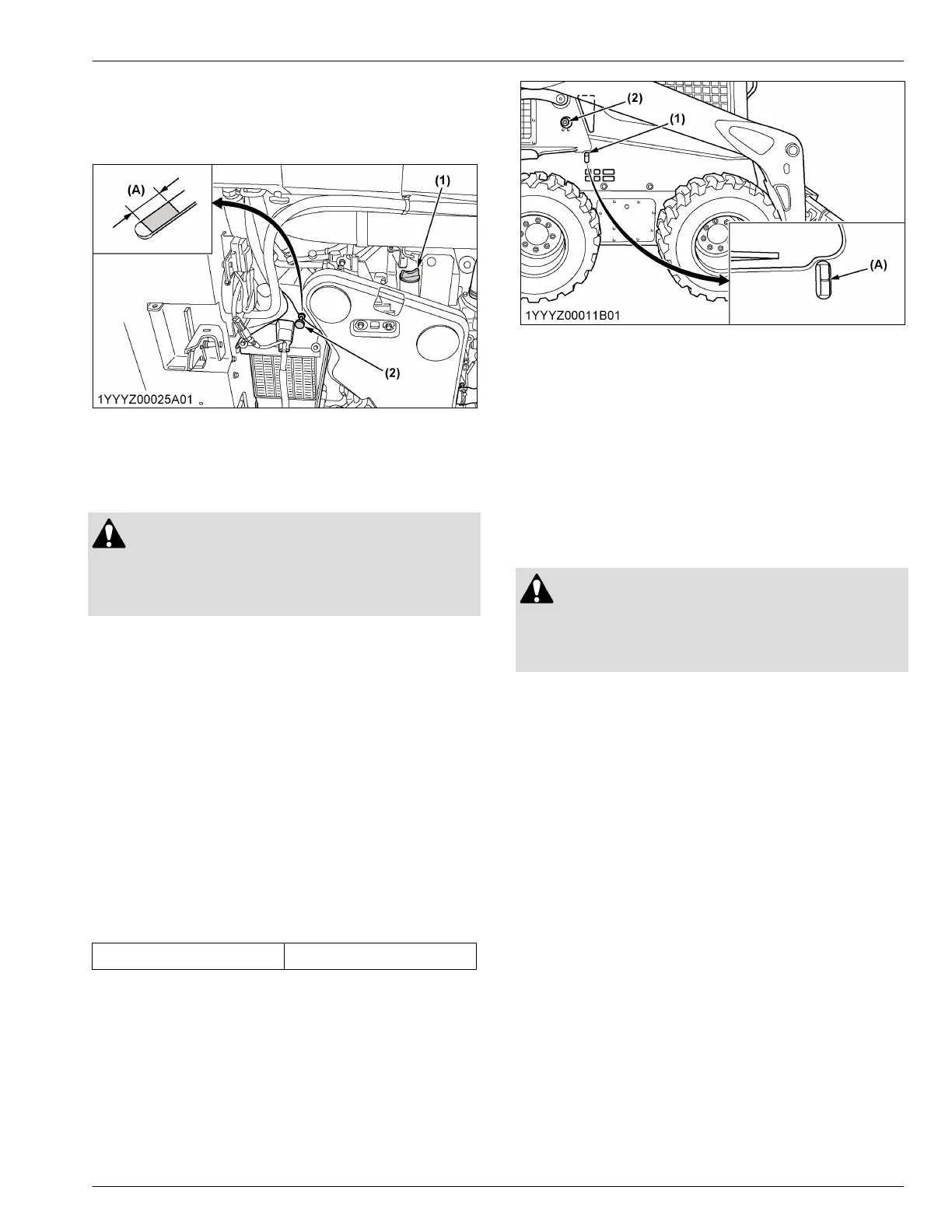5. Check to see that the oil level lies between the two
notches.
6. If the level is too low, add new oil to the prescribed
level at the oil filling port.
(1) Oil filling port
(2) Engine oil dipstick
(A) Required oil level range
5. Checking the hydraulic oil level
WARNING
To avoid personal injury or death:
• Stop the engine and remove the key before
checking the oil level.
IMPORTANT :
• Before filling oil, wipe away all sand and dust
from around the oil port. Make sure to use an
identical type of hydraulic fluid.
• The machine has been filled with hydraulic fluid
before delivery.
(See RECOMMENDED OILS, GREASES, AND
FUELS on page 122)
Do not mix different oils.
1. Park the machine on a firm, flat, and level surface.
2. Lower the lift arms slowly to the ground.
3. Tilt down the attachments.
4. Stop the engine.
5. Check the oil level as to whether it lies on the
center of the gauge at normal temperature.
Normal temperature
10 ℃ to 30 ℃
(1) Gauge
(2) Hydraulic tank cap (Oil filling
port)
(A) Center of the gauge
Enough oil is present if the oil level lies near the
center of the gauge.
6. If the oil level is too low, fill up with oil through the
oil port before starting the engine.
This step is important for the protection of the
hydraulic system.
6. Lubrication points of the machine
WARNING
To avoid personal injury or death:
• First lower all attachments on the ground, and
then stop the engine and remove the key.
IMPORTANT :
• When using the loader in water, generously
grease the following points. After ending work
with the loader, grease again.
Grease the marked grease fittings (both sides) shown
by arrows in the following illustration.
DAILY CHECKS MAINTENANCE

